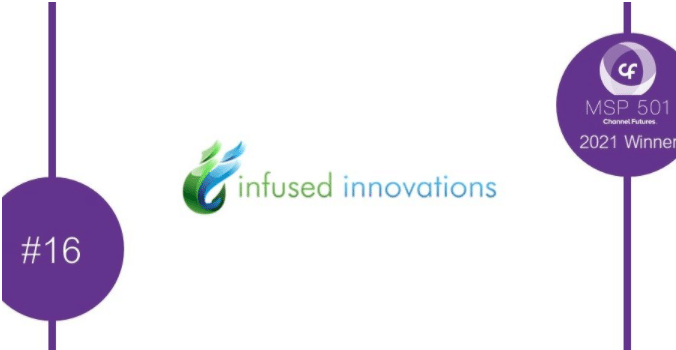How Has the MSP Industry Changed Since Covid Began?
MSPs Increasingly Valued
This year's MSP 501 had a record number of applicants, and 45% of the winners were new recipients. So it looks like there's a considerable amount of new MSPs joining the market. It's no wonder, given the gains to be made here. A majority of applicants (58%) said they consider managed security to be their top revenue-producing solution over the past year. With the massive move to remote work that many industries saw with Covid, organizations needed the help of managed services to aid in their transitions and keep their businesses secure. This also shows that service providers are seeing more value in being assigned the role of an MSP and achieving recognition for it. It's becoming more valued and needed than ever before.Movement Within the MSP Industry
 Partially because of that big move to a remote workforce, the industry saw a good deal of growth in cloud services. More work nested in the cloud simultaneously brought
more cybersecurity risk and increased solutions to address these additional risks. 91% of "501ers" said security was their biggest area of growth this year. Channel Futures expects this trend to continue as companies recognize the need for strong cybersecurity. Aside from cloud and security services, other areas of growth in the MSP industry were backup & disaster recovery (BDR), help desk services, SaaS email protection, and remote monitoring.
Partially because of that big move to a remote workforce, the industry saw a good deal of growth in cloud services. More work nested in the cloud simultaneously brought
more cybersecurity risk and increased solutions to address these additional risks. 91% of "501ers" said security was their biggest area of growth this year. Channel Futures expects this trend to continue as companies recognize the need for strong cybersecurity. Aside from cloud and security services, other areas of growth in the MSP industry were backup & disaster recovery (BDR), help desk services, SaaS email protection, and remote monitoring.
More Recurring Revenue
Another interesting development is that the average 501er's recurring revenue grew 20% in comparison to last year. Recurring revenue means loyal customers, continuing services, and long-term relationships. This is where the industry is heading. It's what we ourselves value at Infused Innovations: customer relationships that are less transactional, more collaborative and based on a deeper understanding of each organization's needs.Other Changing Trends
Channel Futures also noticed new ways MSPs are interweaving existing and new technologies. For example, cloud computing has become a standard norm for many companies. Now it's evolving and being used for edge computing, machine learning and artificial intelligence. We can expect to see robotic process automation (RPA) increasingly embedded into core business applications as the technology develops. As of now only 5% of MSPs that applied are offering RPA, but that number is likely to grow. And some of those few who do offer it seem to specialize in it---RPA is a top revenue source for about 20% of the MSPs who provide it.What Makes a Top MSP Today
 Overall, there are many different elements to being a successful managed service provider. And with so many MSPs out there today, only those who excel in all of these aspects rise to the top of the list. Here's what Channel Futures says the industry considers top-rate for MSPs:
Overall, there are many different elements to being a successful managed service provider. And with so many MSPs out there today, only those who excel in all of these aspects rise to the top of the list. Here's what Channel Futures says the industry considers top-rate for MSPs:
- High customer acquisition and robust recurring revenue. The best MSPs know how to gain customers and keep them.
- Marketing Savvy. Acquiring customers is all about knowing the target market and reaching out to it effectively.
- Cloud and security focus. Successful providers follow the demand of the market, and these are core demands today.
- Insightful gap analysis. Honestly assessing where a company's at and where it aims to be can help bridge the gap between them.
- Accurate, realistic business valuations. Similarly, those that have a good grasp of the business's assets, investments, and earnings, as well as the market value of their offerings, will have a clearer path to success.
- Mix of products and services. Providing a variety of offerings allows an MSP to serve more organizations well.
- High operational efficiencies. Companies that want to excel can't afford to run inefficiently, so streamlining is crucial.
- Detailed succession plans. A broader part of streamlining involves being aware of those who may retire soon and preparing those who will move into their roles, so that transitions go smoothly without gaps in production.
- Thorough competitor analysis. Staying on top of what others in the MSP industry are offering can provide insight and drive success through healthy competition.
- Understanding of profit vs. revenue. Lastly, it's good to remember that large revenue doesn't necessarily equal large profits. A company can have a lot of revenue that doesn't translate to great profits if it's not handling its expenditures wisely.
Stay connected. Join the Infused Innovations email list!
Share this
You May Also Like
These Related Posts
Infused Innovations Ranks #11 on Channel Futures 2022 MSP 501


Infused Innovations Ranks #11 on Channel Futures 2022 MSP 501
June 21, 2022
3
min read
Infused Innovations Places #1 in Channel Futures' 2022 MSP 501 New England Regional Ranking


Infused Innovations Places #1 in Channel Futures' 2022 MSP 501 New England Regional Ranking
July 18, 2022
2
min read
Channel Futures Names Infused Innovations #16 in MSP 501 Worldwide for 2021


Channel Futures Names Infused Innovations #16 in MSP 501 Worldwide for 2021
June 28, 2021
2
min read
No Comments Yet
Let us know what you think